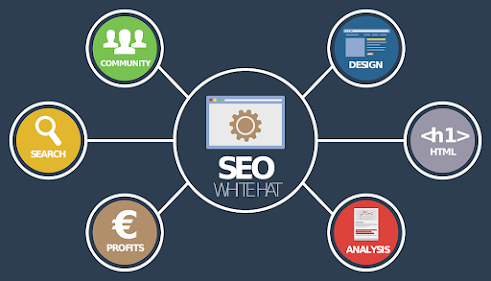What is SEO:
SEO stands for SEARCH ENGINE OPTIMIZATION. The process of enhancing organic search engine results page traffic is known as search engine optimization, or SEO (SERP). Listings or organic searches are other names for it. You must use SEO to improve your rank if you want to be the top result for all keywords.
You must comprehend how search engines function to score highly on the SERP. This post will teach you about the various forms of SEO, how Google ranks websites, and several SEO tactics you can use to raise your ranking.
Three Functions of Search Engine:
There are three functions of a Search Engine:
Crawling:
The crawler read all the information of Web-Page and scans it. There are more than a hundred web pages on a single website.
Indexing:
Google's "Crawler or Spider" after reading all the webpage information like its title, headings, content, etc collects all of them in its index. This function is called indexing.
Ranking:Types of SEO:
If you want to get found on Google for a particular term, SEO must be applied. There are two types of SEO:
On-Page SEO:
The process of optimizing website components is known as on-page SEO. As a user, you have influence over each of these components. The following elements of on-page SEO:
keyword analysis
Understanding the keywords you want to rank for is the first thing you need to accomplish with your website before you do anything else. You must conduct keyword research to accomplish this. You select the primary and secondary keywords in this procedure, then create content and meta tags around them.
The following are the main elements of keyword research:
- Search volume,
- rivalry,
- relevance.
Title Tag:
The title tag of a page is displayed as a search snippet in a search engine results page (SERP). It appears as the search result's clickable headline and is important for user experience, SEO, and social sharing.
Heading Tag:A webpage's headings and subheadings are divided by heading tags, also referred to as header tags. From H1 to H6, they are ranked in importance, with H1s typically being the title. A web page's readability and SEO are improved by header tags.
Meta Description:An attribute in your meta tags called a "meta description" helps describe your page. This text fragment may be displayed beneath your headline in search engine results, but occasionally search engines will choose to use a text fragment from the page's main body copy instead.
URL :A URL (Uniform Resource Locator), also referred to as a "web address," indicates where on the internet a resource (such as a web page) is located. The "protocol," also known as the method for retrieving the resource, such as HTTP, HTTPS, FTP, etc., is also specified in the URL.
Off-Page SEO:
Off-page SEO's foundation is the creation of backlinks. A website with numerous high-quality backlinks will typically rank higher than an otherwise equal site with fewer backlinks because search engines consider backlinks as indicators of the quality of the content that is linked.
Backlinks:
Backlinks are connections between pages on different websites. Your site has a backlink from the person who links to it. A backlink from you is created when you link to another website.
Internal & External links:
In contrast to external linking, which refers to URLs on other domains, internal linking is when a site links to URLs within the same domain. Internal links make it easier for users and search engines to find certain pages on your website.
Who is the SEO for?
Maintaining visibility in search engine results pages is essential for firms operating in a highly competitive sector. SEO is for :
- Digital Marketers
- Affiliate Marketers
- SEO content writer
- anyone who wants to learn this skill
Purpose of SEO:
The purpose of the SEO procedure is to improve a company's organic search rankings and increase organic search traffic to the website. Data marketers may now discern between organic search traffic and traffic that comes to a website from other channels, such as sponsored search, social media, referrals, and direct traffic.
5 best sites for learning SEO:
We are presenting you the top 5 best sites for learning SEO Free:
SEO vs PPC:
Compared to PPC, SEO is extremely slow. While PPC will start giving you leads straight immediately, optimizing your website can take months to see results. SEO is a continuous process. Your website will never be completely "optimized," but as you put more effort into it, the optimization will grow. However, SEO produces long-term results, but PPC does not. So, SEO is superior to PPC.
Advantages & Disadvantages of SEO?
- Gives long-lasting results
- It is advantageous to other advertising strategies.
- Increases consumer engagement through organic search
- Provides customers with a trustworthy web experience
- It is time taken process
- Highly competitive
- The outcomes are not guaranteed.
- It must be constantly maintained.
- It does not yield a profit at first.




Nauman Malik Appreciating to your comment for more information subscribe my Blog.